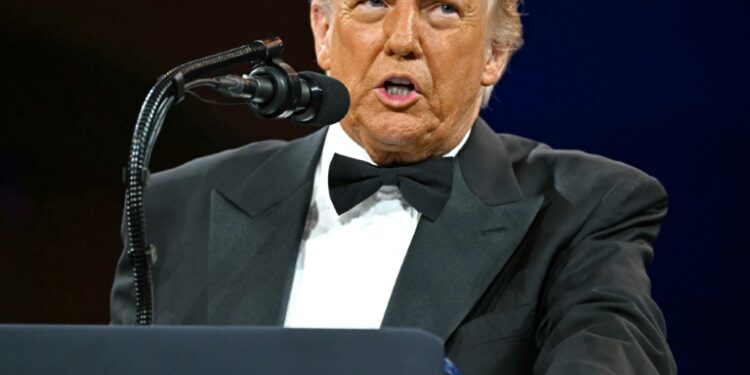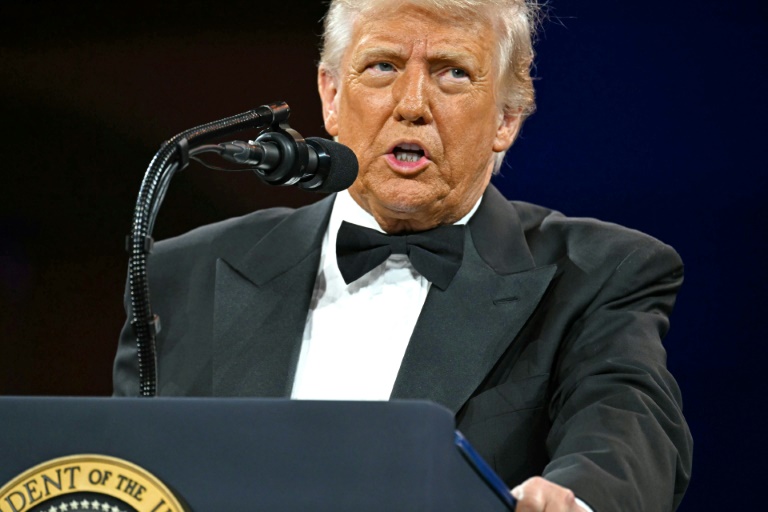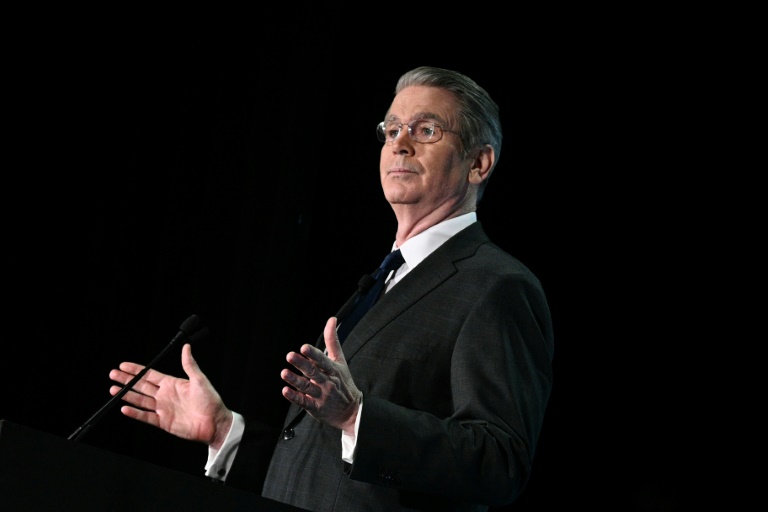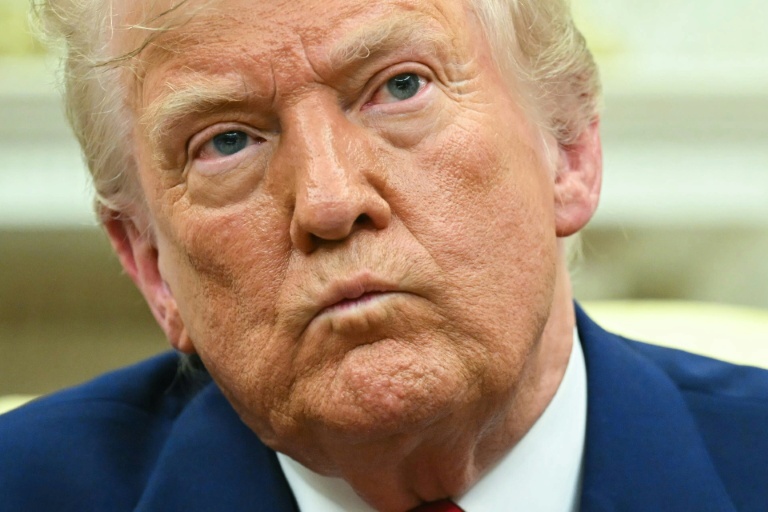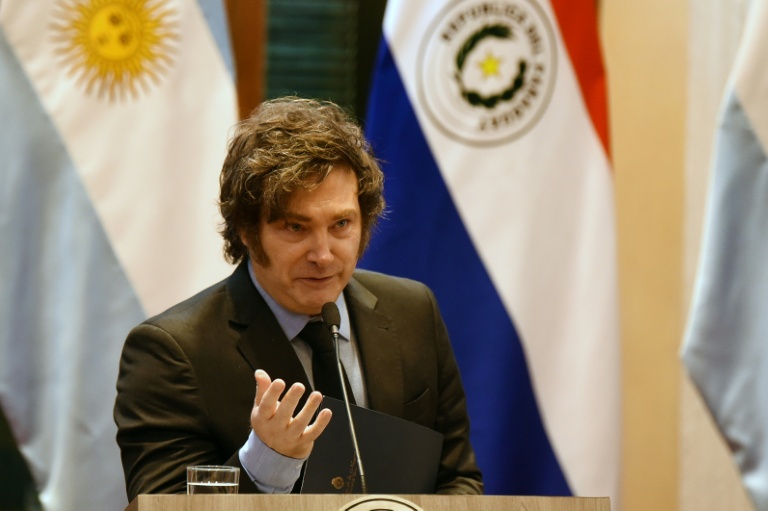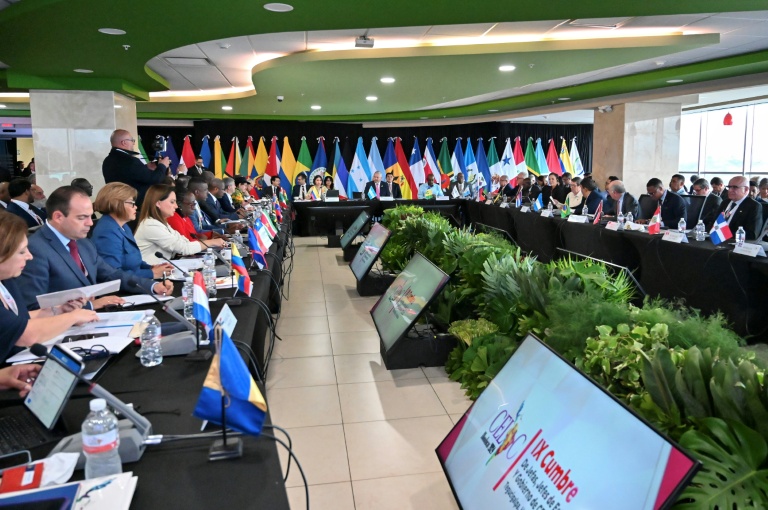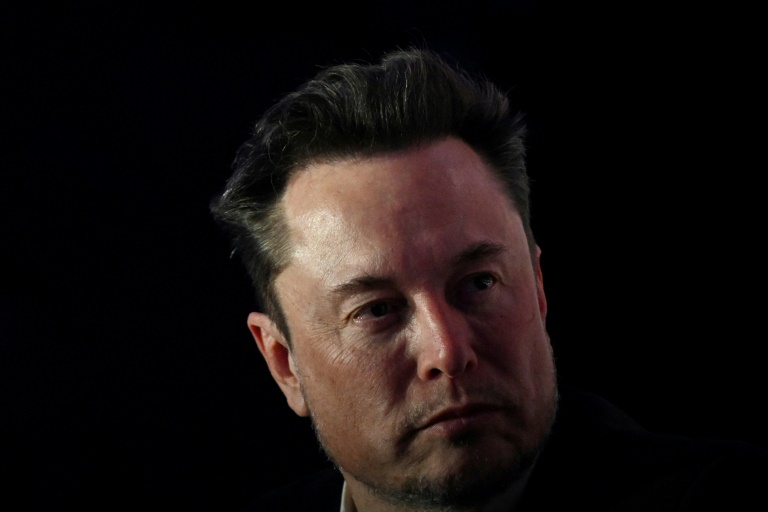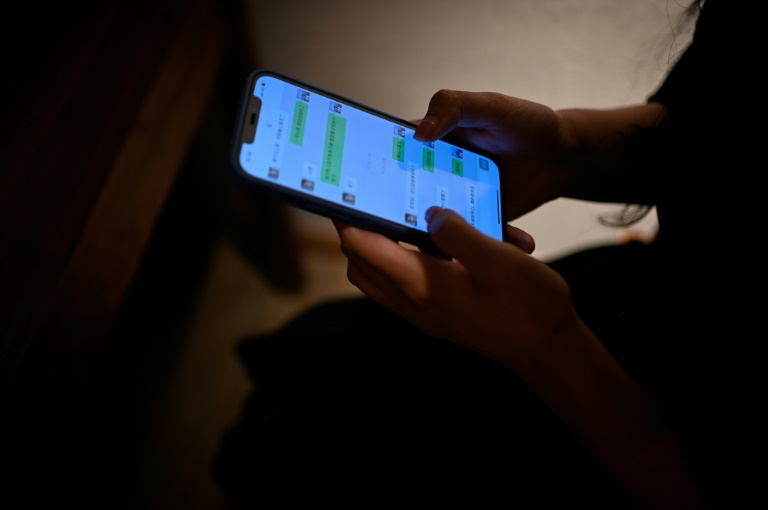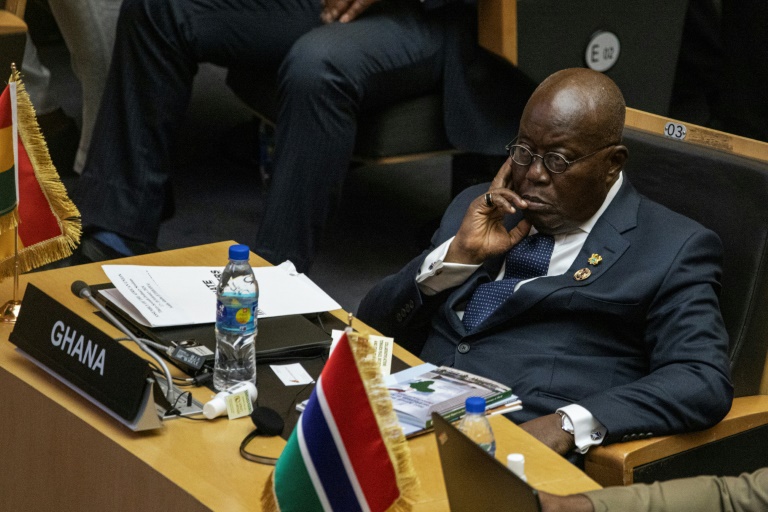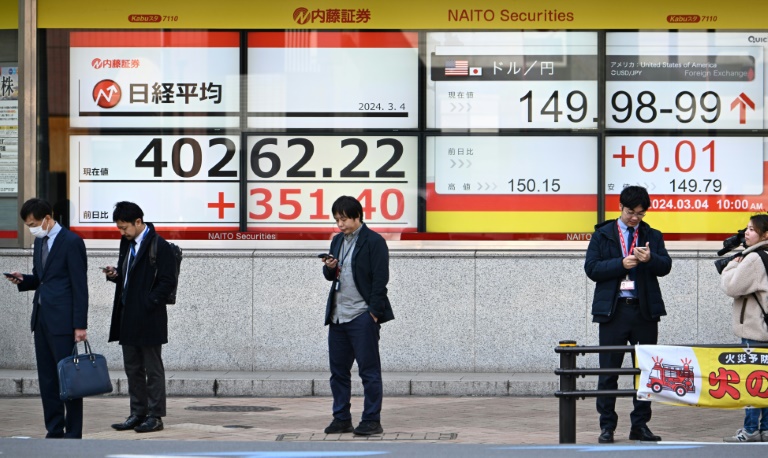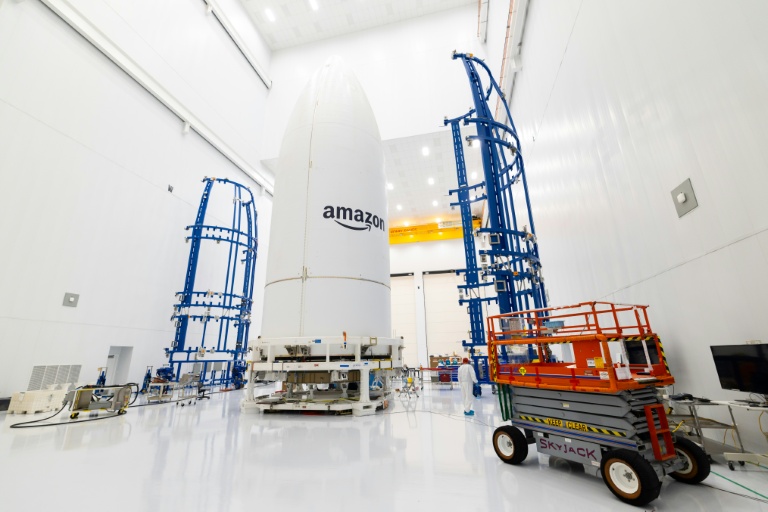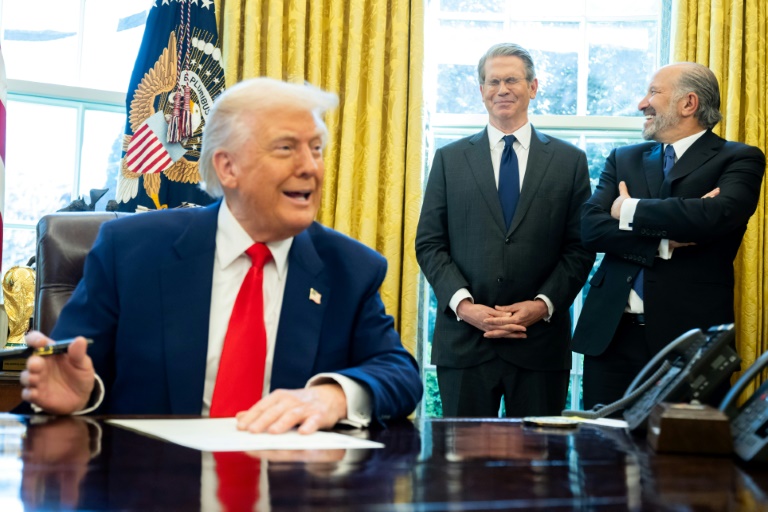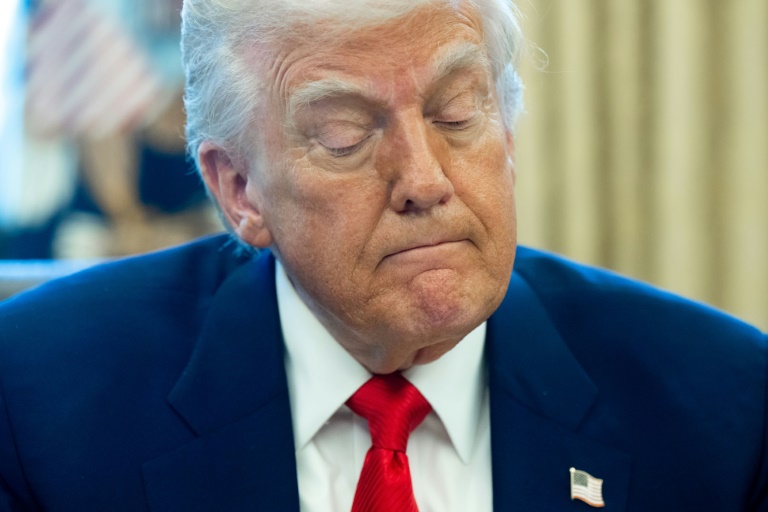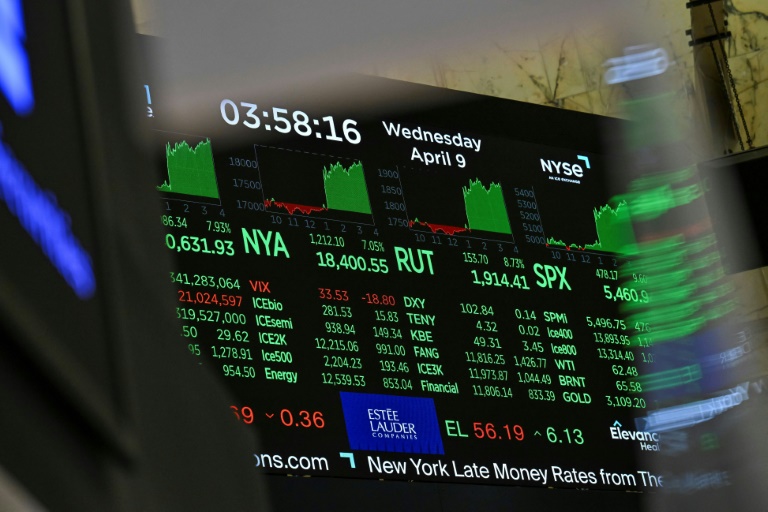Washington (AFP) – US President Donald Trump abruptly backed down Wednesday in his global trade war with a 90-day pause for most countries—but slapped even more levies against China in what has become a full-scale confrontation between the world’s two largest economies. Following days of global market turmoil, Wall Street stocks surged in reaction to Trump’s announcement.
“I have authorized a 90-day PAUSE” on higher tariffs that took effect on Wednesday, Trump said on his Truth Social network, explaining that he made the decision after more than 75 countries had reached out to negotiate and did not retaliate against the United States. Only a flat rate of 10 percent tariffs on all countries that took effect on Saturday will remain in place. This marked a stunning reversal from often punishing levies that hit even many of the closest US allies. But Trump accused China of still “ripping off” his country.
“Based on the lack of respect that China has shown to the World’s Markets, I am hereby raising the Tariff charged to China by the United States of America to 125 percent, effective immediately,” Trump stated. He had only hours earlier ramped up the duties on Chinese goods to a giant 104 percent. China then retaliated by raising tariffs on US imports to 84 percent. “At some point, hopefully in the near future, China will realize that the days of ripping off the U.S.A., and other Countries, is no longer sustainable or acceptable,” Trump added.
The European Union had earlier launched its own counterattack, announcing measures targeting some US products from Tuesday in retaliation for American duties on global steel and aluminum exports. The 27-nation bloc, which Trump has accused of being created to “screw” the United States, will hit more than 20 billion euros’ worth of US products, including soybeans, motorcycles, and beauty products. However, the EU notably did not retaliate against the 20 percent US tariffs that came into effect a minute after midnight on Wednesday.
Trump announced a week ago on what he called “Liberation Day” that he would impose a 10 percent baseline tariff on all countries that took effect on Saturday, with additional rates for economies including China and the EU with a large trade surplus with the United States taking effect on Wednesday. With markets roiled for the past week, Trump earlier Wednesday urged Americans to “BE COOL!” and said that “Everything is going to work out well.”
Wall Street stocks rocketed higher Wednesday after Trump’s pause announcement. Minutes after Trump unveiled it, the S&P 500 surged 6.0 percent higher to 5,281.44, snapping a brutal run of losses over the past week. European and Asian stock markets had earlier tumbled along with oil and the dollar as the confrontation escalated. US bond yields had also risen amid a sharp sell-off—a major economic red light as sovereign government debt is normally seen as a safe haven for investors in troubled times.
Before his pivot, Trump mentioned that world leaders were rushing to negotiate “tailored” deals with the United States, with Japan and South Korea among those sending delegations to Washington. “I’m telling you, these countries are calling us up kissing my ass,” Trump told a dinner with fellow Republicans on Tuesday night. But China doubled down. “The tariff escalation against China by the United States simply piles mistakes on top of mistakes,” the Chinese finance ministry said.
US Treasury Secretary Scott Bessent earlier warned countries at a banking summit Wednesday that aligning with Beijing “would be cutting your own throat.” Trump believes his policy will revive America’s lost manufacturing base by forcing companies to relocate to the United States. The billionaire former property tycoon has particularly raged against China, accusing it of excess production and “dumping” inexpensive goods on other economies.
China warned tourists on Wednesday to “fully assess the risks” before traveling to the United States. US Defense Secretary Pete Hegseth then warned against Chinese “threats” as he visited Panama, whose canal is at the center of a row between Beijing and Washington.
© 2024 AFP

